How VR Technology Supports Adaptive Learning in Military Training
The integration of Virtual Reality (VR) technology in military training marks a groundbreaking shift in how soldiers prepare for the challenges of modern warfare. Imagine stepping into a fully immersive environment where you can practice critical skills and make split-second decisions without the risks associated with live exercises. This is not just a futuristic dream; it’s the reality that VR brings to military training. By creating lifelike simulations, VR technology enables service members to engage in realistic scenarios that mirror the complexities of real combat situations. This approach not only enhances skill acquisition but also fosters a deeper understanding of tactical decision-making under pressure.
In traditional military training, soldiers often find themselves in static environments that may not accurately reflect the dynamic nature of combat. However, with VR, they can be transported to various terrains, climates, and situations that they might encounter in the field. This technology allows for a level of immersion that is unparalleled, enabling trainees to feel as though they are truly in the midst of a mission. As they navigate through these virtual environments, they are not just passively observing; they are actively engaging with their surroundings. This hands-on experience is crucial for developing the muscle memory and situational awareness necessary for success in high-stakes scenarios.
One of the standout features of VR technology in military training is its ability to support adaptive learning. This method tailors the educational experience to meet the unique needs of each soldier, enhancing both retention and engagement. In military contexts, where every individual has distinct roles and responsibilities, personalized training ensures that no one is left behind. For instance, a soldier who excels in marksmanship but struggles with tactical planning can receive targeted training that focuses on strategy development through VR scenarios. This individualized approach not only boosts confidence but also maximizes the effectiveness of the training program.
By leveraging VR, military training programs can create simulations that adapt in real-time to the learner's pace and skill level. Imagine a trainee who is just starting to learn about battlefield tactics; the VR program can adjust the complexity of scenarios based on their progress. This means that as they improve, the challenges become more sophisticated, keeping them engaged and motivated. This kind of personalized experience is akin to having a personal coach who knows exactly how to push you just enough to foster growth without overwhelming you. Such tailored experiences are vital for creating a more effective learning environment for service members.
Another significant advantage of VR in military training is the ability to provide immediate feedback. During training exercises, soldiers can receive instant insights into their performance, allowing them to understand their mistakes and successes on the spot. This real-time feedback loop is essential for skill development and confidence building. For example, if a soldier fails to communicate effectively during a simulated operation, the VR system can highlight this issue immediately, enabling them to adjust their approach in subsequent scenarios. This immediate correction helps reinforce learning and ensures that soldiers are always improving.
Scenario-based learning is a hallmark of VR training, allowing soldiers to immerse themselves in lifelike situations that enhance their problem-solving skills. Picture this: a soldier is put in a virtual environment where they must navigate through a hostile area while making critical decisions on the fly. This kind of training prepares them for the unpredictability of real combat situations, where every second counts. The ability to practice various scenarios, from urban warfare to disaster response, ensures that soldiers are well-equipped to handle whatever challenges they may face in the field.
VR technology also facilitates collaborative training exercises, enabling soldiers to work together in virtual environments. This aspect is crucial, as effective communication and teamwork are vital components of successful military operations. By training together in a VR setting, soldiers can practice coordinating their actions and strategies, fostering a sense of camaraderie and trust. This collaborative experience is akin to a sports team practicing together; the more they train as a unit, the better they perform in actual missions.
Despite its many advantages, the integration of VR technology into military training does not come without challenges. High costs, technological limitations, and the need for comprehensive training for instructors are significant hurdles that must be addressed. However, the potential benefits often outweigh these challenges, making VR a worthwhile investment for military training programs.
The initial investment in VR technology can be significant, encompassing hardware, software, and ongoing maintenance costs. However, when considering the long-term benefits—such as improved training outcomes and reduced risks during live exercises—many military organizations find that these expenditures are justified. It’s much like investing in a high-quality tool; while the upfront cost may be steep, the efficiency and effectiveness it brings can lead to substantial savings over time.
Current VR technology may have limitations in terms of realism and interactivity. Addressing these shortcomings is essential to maximize the effectiveness of VR in military training scenarios. As technology continues to evolve, we can expect improvements in the realism of virtual environments, making them even more effective for training purposes. The goal is to create simulations that are indistinguishable from real-life experiences, ensuring that soldiers are as prepared as possible for the challenges they will face.
- What is VR technology?
VR technology creates immersive simulations that allow users to interact with a computer-generated environment. - How does adaptive learning work in military training?
Adaptive learning tailors training experiences to meet the individual needs of soldiers, enhancing their skills effectively. - What are the benefits of using VR in military training?
Benefits include realistic training scenarios, immediate feedback, personalized experiences, and enhanced teamwork. - What challenges does VR technology face in military training?
Challenges include high costs, technological limitations, and the need for qualified instructors.
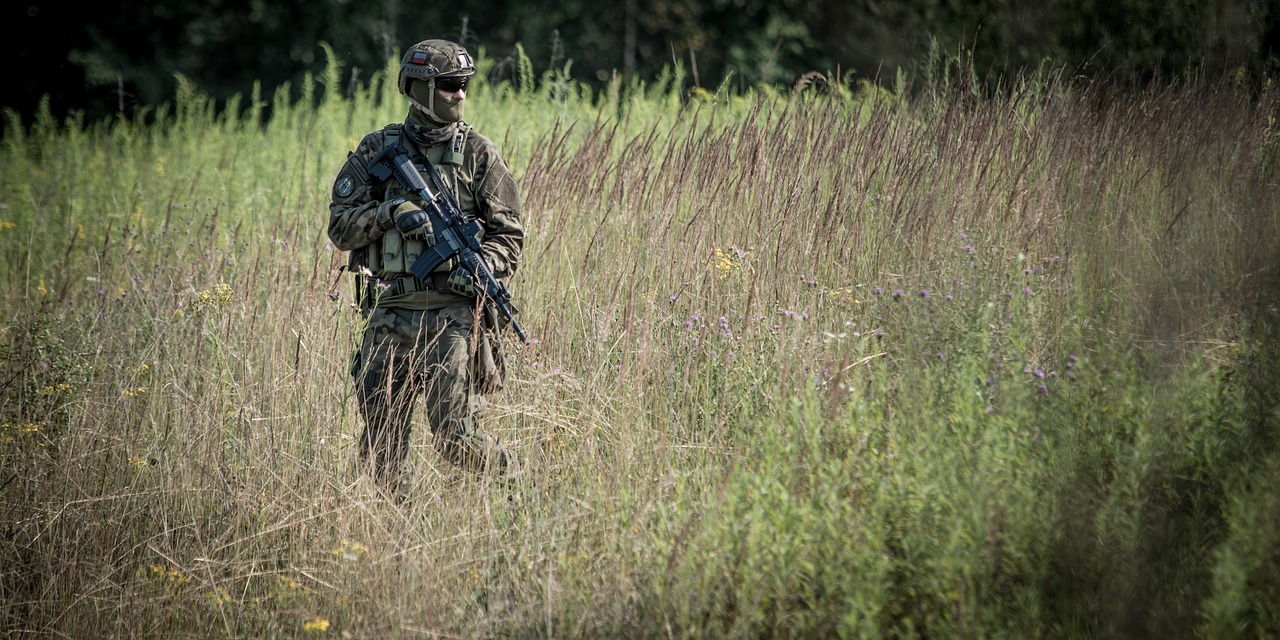
The Role of VR in Military Training
Virtual Reality (VR) technology has revolutionized military training by providing immersive environments that replicate real-world scenarios, enabling soldiers to practice critical skills and make decisions without the risks associated with live training exercises. Imagine stepping into a digital battlefield, where the sights and sounds are so realistic that it feels like you’re actually there. This technology immerses trainees in situations they might face in combat, allowing them to experience the pressure and urgency of real-life missions without any physical danger.
One of the most compelling aspects of VR in military training is its ability to simulate a variety of environments and scenarios. From urban warfare to open-field engagements, soldiers can navigate through diverse landscapes that challenge their tactical thinking and adaptability. These simulations can be adjusted in real-time, creating a dynamic learning experience that keeps soldiers on their toes. In this way, VR acts as a powerful tool for honing decision-making skills in high-pressure situations, where every second counts.
Furthermore, VR training programs can be designed to incorporate a wide range of scenarios, including:
- Counter-terrorism operations
- Disaster response simulations
- Search and rescue missions
- Combat medical training
By engaging in these varied scenarios, soldiers can better prepare themselves for the unpredictable nature of real combat. This kind of training not only enhances their technical skills but also fosters mental resilience, ensuring that they can remain calm and effective under pressure.
Moreover, the integration of VR technology allows for the incorporation of advanced analytics to track performance metrics. Instructors can assess how well a soldier navigated a specific scenario, identifying areas for improvement and tailoring future training sessions accordingly. This data-driven approach ensures that every training exercise is not just a one-off experience but part of a continuous learning journey.
In conclusion, the role of VR in military training cannot be overstated. It provides a safe yet challenging environment for soldiers to develop their skills, make critical decisions, and learn from their mistakes. As technology continues to evolve, we can expect even more innovative applications of VR in military training, further enhancing the readiness and effectiveness of our armed forces.
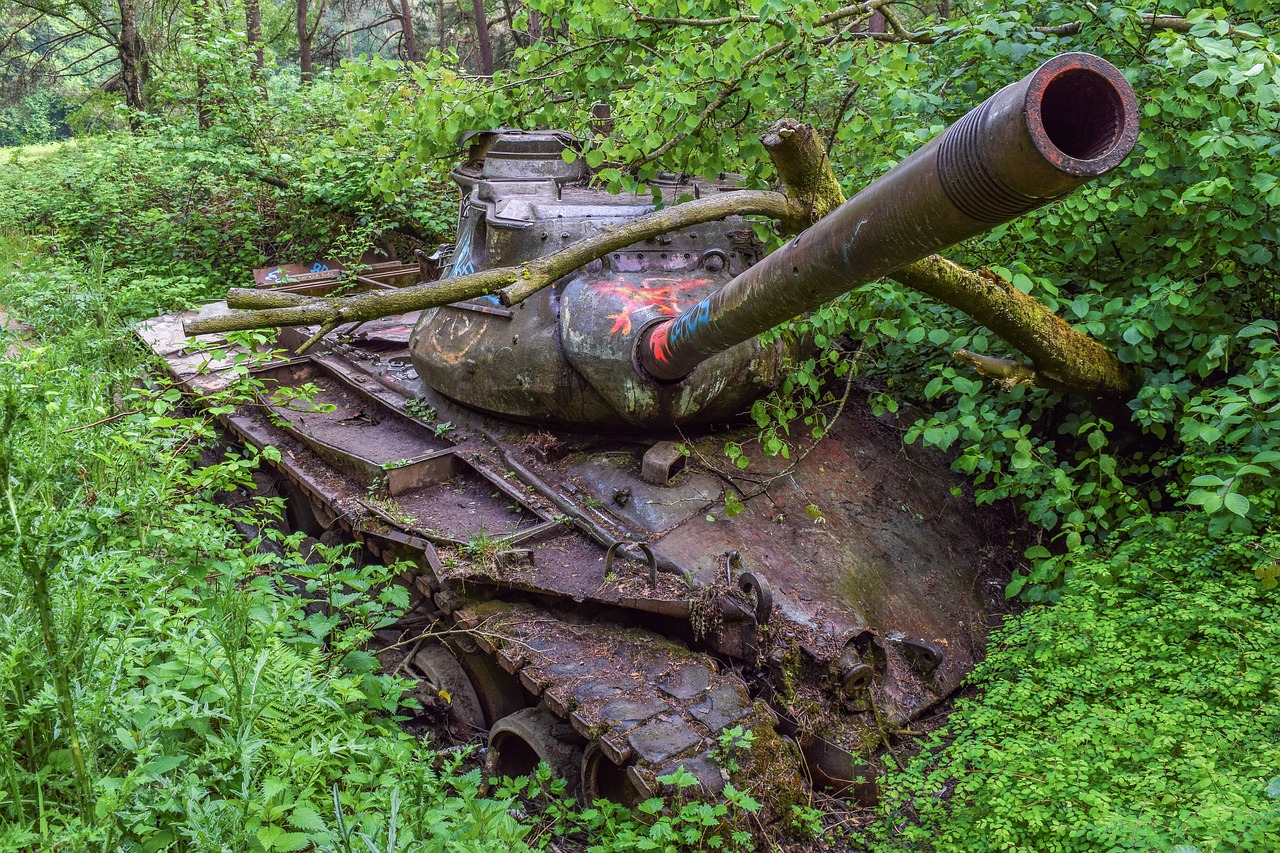
Benefits of Adaptive Learning
Adaptive learning is not just a buzzword; it’s a transformative approach that tailors educational experiences to meet the unique needs of each learner. In the context of military training, this personalization becomes even more critical. Imagine a soldier, equipped with a virtual reality headset, stepping into a training module that adjusts in real-time based on their performance. This is the essence of adaptive learning—it’s like having a personal coach who knows your strengths and weaknesses and helps you improve at your own pace.
One of the most significant benefits of adaptive learning in military training is enhanced retention. Traditional training methods often adopt a one-size-fits-all approach, which can lead to disengagement and poor information retention. In contrast, adaptive learning ensures that soldiers are not just passively consuming information but actively engaging with content that resonates with their individual learning styles. This engagement boosts their confidence and prepares them for real-life situations where quick thinking and decision-making are paramount.
Furthermore, adaptive learning fosters a sense of ownership over the training process. When soldiers can see their progress and receive tailored feedback, they feel more invested in their learning journey. This is particularly important in high-stakes environments like the military, where every decision can have significant consequences. With adaptive learning, soldiers can tackle scenarios that are relevant to their specific roles, whether they are in logistics, combat, or medical support. This relevance not only enhances their skills but also increases their motivation to learn.
Additionally, the integration of VR technology in adaptive learning allows for the creation of dynamic training environments. Unlike static training modules, VR simulations can evolve based on the soldier's performance. For instance, if a soldier excels in a particular scenario, the program can present increasingly challenging situations to push their limits further. Conversely, if they struggle, the system can adjust to provide more foundational training until they are ready to advance. This fluidity in training is akin to a video game that adapts to your skill level, ensuring you are always challenged but never overwhelmed.
Moreover, the immediate feedback mechanisms built into VR platforms are a game-changer. Soldiers receive real-time insights into their actions during training exercises, allowing them to correct mistakes on the spot. This instant feedback loop is crucial for skill development, as it enhances learning by reinforcing correct actions and clarifying misconceptions. Think of it as having a mentor by your side, guiding you through each step, ensuring you learn effectively and confidently.
In summary, the benefits of adaptive learning in military training are profound. By personalizing the training experience, enhancing retention, fostering ownership, creating dynamic environments, and providing immediate feedback, adaptive learning not only equips soldiers with essential skills but also prepares them for the unpredictability of real-world challenges. As we continue to explore the integration of VR technology in military training, the potential for adaptive learning to revolutionize how our service members prepare for their missions is truly exciting.
- What is adaptive learning? Adaptive learning is an educational approach that customizes learning experiences to fit individual learner needs, enhancing engagement and retention.
- How does VR enhance adaptive learning in military training? VR creates immersive environments that can adjust in real-time based on a soldier's performance, providing personalized training experiences.
- What are the key benefits of using adaptive learning in military contexts? Key benefits include improved retention, increased engagement, personalized training, and immediate feedback, all of which are crucial for effective skill development.
- Are there any challenges in implementing adaptive learning with VR? Yes, challenges include high costs, technological limitations, and the need for trained instructors to effectively utilize these tools.

Personalized Training Experiences
In the realm of military training, the phrase "one size fits all" simply doesn't cut it. Every soldier comes with unique backgrounds, strengths, and areas for improvement. This is where Virtual Reality (VR) truly shines, offering a tailored approach to learning that adapts to the individual needs of each service member. Imagine stepping into a virtual battlefield designed specifically for you, where the challenges you face are aligned with your current skill level and learning pace. This kind of personalized training experience not only enhances engagement but also significantly boosts retention of critical skills.
VR technology enables military trainers to create immersive simulations that adjust in real-time based on a soldier's performance. For instance, if a trainee struggles with a specific tactical maneuver, the VR system can modify the scenario to provide additional practice in that area. This adaptive learning environment allows soldiers to refine their skills without the pressure of real-world consequences, leading to a more confident and competent individual when it matters most.
Moreover, the flexibility of VR training means that soldiers can revisit specific scenarios at any time, allowing for continuous improvement and mastery of essential skills. Whether it's navigating complex terrains, engaging in combat strategies, or practicing communication in high-stress situations, the ability to repeat and refine experiences is invaluable. This kind of repetition is akin to a musician practicing a piece until it becomes second nature—each session builds upon the last, leading to greater proficiency.
To illustrate the effectiveness of personalized training experiences, consider the following table that highlights key features of adaptive VR training compared to traditional methods:
| Feature | Adaptive VR Training | Traditional Training |
|---|---|---|
| Customization | Highly personalized scenarios based on individual performance | Standardized training for all soldiers |
| Feedback | Instant, real-time feedback | Delayed feedback, often after the exercise |
| Repetition | Unlimited practice opportunities | Limited by time and resources |
| Engagement | High levels of engagement through immersive experiences | Lower engagement, often less interactive |
In summary, the integration of VR technology into military training not only personalizes the learning experience but also transforms how soldiers develop their skills. By creating an environment that adapts to individual needs, the military can ensure that each service member is prepared to face the challenges of modern warfare with confidence and competence. The future of military training is not just about learning—it's about learning in a way that is as unique as the soldiers themselves.
- What is VR technology in military training?
VR technology refers to immersive simulations that replicate real-world scenarios, allowing soldiers to practice skills and make decisions in a safe environment. - How does adaptive learning benefit military personnel?
Adaptive learning tailors training experiences to individual needs, enhancing retention and engagement, ensuring soldiers are well-prepared for their specific roles. - What are the challenges of implementing VR in military training?
Challenges include high costs, technological limitations, and the need for comprehensive training for instructors. - Can VR training replace traditional military training methods?
While VR training offers significant advantages, it is most effective when used in conjunction with traditional methods to provide a well-rounded training experience.
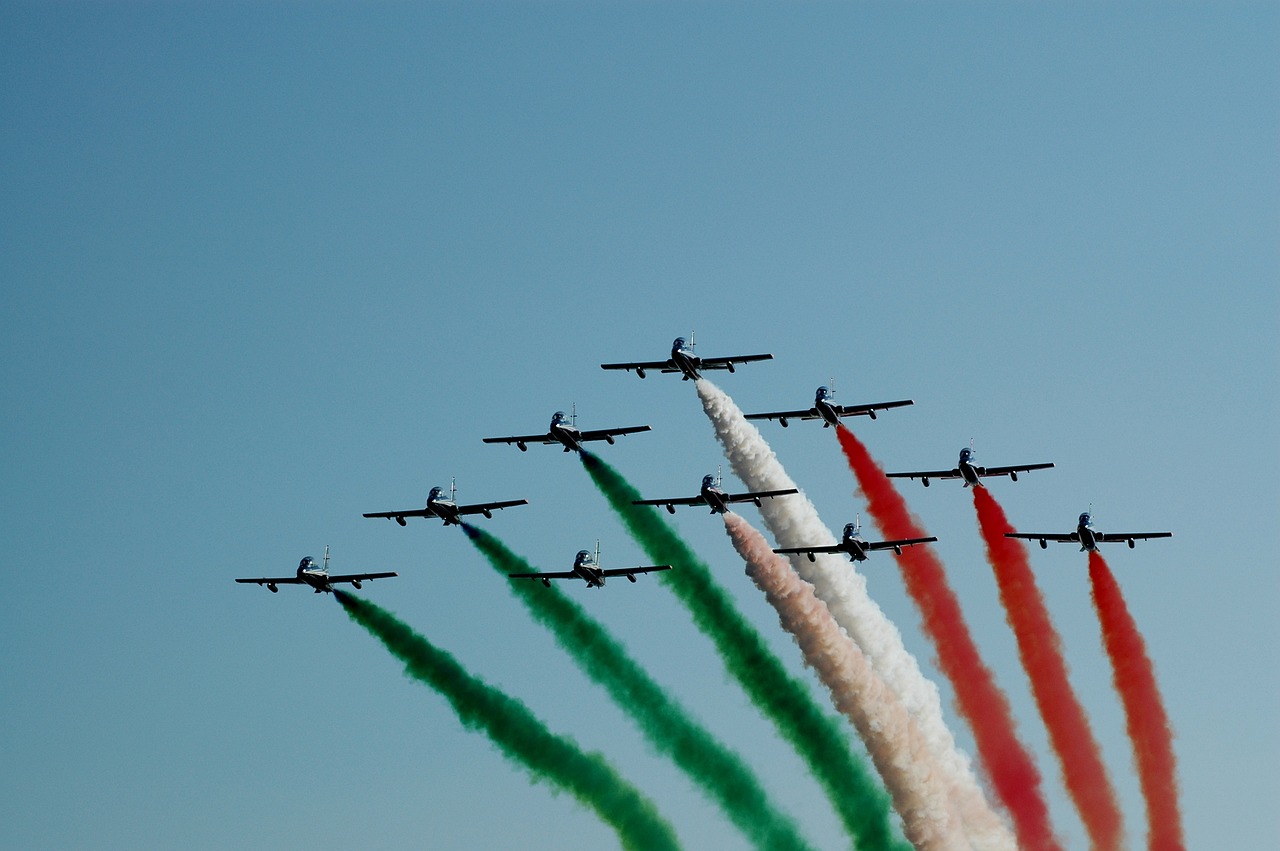
Real-Time Feedback Mechanisms
One of the most groundbreaking aspects of Virtual Reality (VR)real-time feedback to trainees. Imagine being in a high-stakes environment where every decision counts—this is where immediate feedback becomes invaluable. With VR, soldiers can engage in simulated exercises that closely mimic real-life scenarios, allowing them to make decisions, execute maneuvers, and face challenges just as they would in the field.
When a soldier makes a mistake during a training exercise, the VR system can instantly highlight that error, allowing the trainee to understand what went wrong and how to correct it. This immediate feedback loop is crucial for several reasons:
- Enhanced Learning: Soldiers can learn from their mistakes on the spot, which significantly boosts retention and understanding.
- Confidence Building: The ability to correct errors in real-time fosters a sense of competence and confidence, essential traits for anyone in the military.
- Skill Development: Continuous feedback helps soldiers refine their skills, ensuring they are always improving and adapting to new challenges.
Moreover, the feedback provided can be tailored to each individual, taking into account their unique learning styles and paces. This personalization ensures that every soldier—regardless of their initial skill level—receives the guidance they need to excel. For instance, a soldier who struggles with tactical decision-making might receive more detailed feedback in that area, while another who excels in physical maneuvers might be encouraged to focus on strategy.
The integration of analytics into VR training platforms further enhances this feedback mechanism. By tracking a soldier's performance over time, instructors can identify patterns, strengths, and weaknesses, allowing for a more comprehensive training approach. This data-driven feedback can be invaluable for both the individual soldier and the overall training program.
In conclusion, real-time feedback mechanisms in VR training not only accelerate the learning process but also cultivate a culture of continuous improvement and adaptability. As military operations become increasingly complex and unpredictable, the ability to learn and adjust on the fly is not just beneficial—it’s essential.
- What is the primary benefit of real-time feedback in VR training?
Real-time feedback allows soldiers to immediately understand their mistakes and successes, fostering quicker learning and skill development. - How does VR technology personalize training for soldiers?
VR systems can adapt simulations based on individual performance, ensuring that each soldier receives tailored guidance and support. - Can real-time feedback improve team collaboration in military training?
Yes! By providing instant feedback during collaborative exercises, soldiers can refine their communication and teamwork skills in a safe environment.

Scenario-Based Learning
Scenario-based learning in Virtual Reality (VR) is a game changer, especially in military training. Imagine stepping into a virtual battlefield where every decision you make has real consequences. This immersive experience not only captivates the trainees but also significantly enhances their problem-solving skills. By engaging in lifelike situations, soldiers can practice their responses to unpredictable circumstances, much like a pilot simulating emergency landings before taking to the skies. With VR, they can face various scenarios—from tactical maneuvers to crisis management—without the risks associated with actual combat.
One of the standout features of scenario-based learning is its ability to adapt to the learner's progress. As soldiers navigate through different virtual environments, the scenarios can change based on their actions. For instance, if a soldier successfully completes a mission, the next challenge might ramp up in difficulty, introducing new variables that require quick thinking and strategy. This dynamic approach ensures that training remains relevant and challenging, pushing each individual to grow and learn at their own pace.
Moreover, VR scenarios can be designed to replicate specific missions or environments that soldiers are likely to encounter. This tailored training means that when they finally face these situations in real life, they are not only prepared but also confident in their abilities. The psychological benefits are immense; familiarity breeds comfort, and comfort leads to better performance under pressure.
To illustrate the effectiveness of scenario-based learning in VR, consider the following table that highlights key advantages:
| Advantages of Scenario-Based Learning in VR | Description |
|---|---|
| Realism | Creates lifelike environments that mirror real combat situations, enhancing training relevance. |
| Adaptability | Adjusts scenarios based on the trainee's performance, ensuring personalized learning experiences. |
| Confidence Building | Prepares soldiers for real-life scenarios, boosting their confidence and decision-making skills. |
| Team Dynamics | Encourages collaboration and communication among team members, vital for military operations. |
In conclusion, scenario-based learning in VR is not just a training tool; it's a transformative approach that prepares soldiers for the complexities of modern warfare. By immersing them in realistic scenarios, we equip them with the skills and confidence they need to succeed in high-pressure environments. As VR technology continues to evolve, the potential for enhancing military training through scenario-based learning is boundless, paving the way for a new generation of highly skilled service members.
- What is scenario-based learning in VR? It's a training method that immerses soldiers in lifelike situations to enhance their decision-making and problem-solving skills.
- How does VR technology improve military training? VR provides realistic environments for practice, allowing soldiers to experience scenarios without the risks of real-life training.
- Can VR training be customized for individual soldiers? Yes, VR scenarios can adapt to the learner's pace and skill level, providing personalized training experiences.
- What are the benefits of using VR in military training? Benefits include enhanced realism, adaptability, confidence building, and improved teamwork.
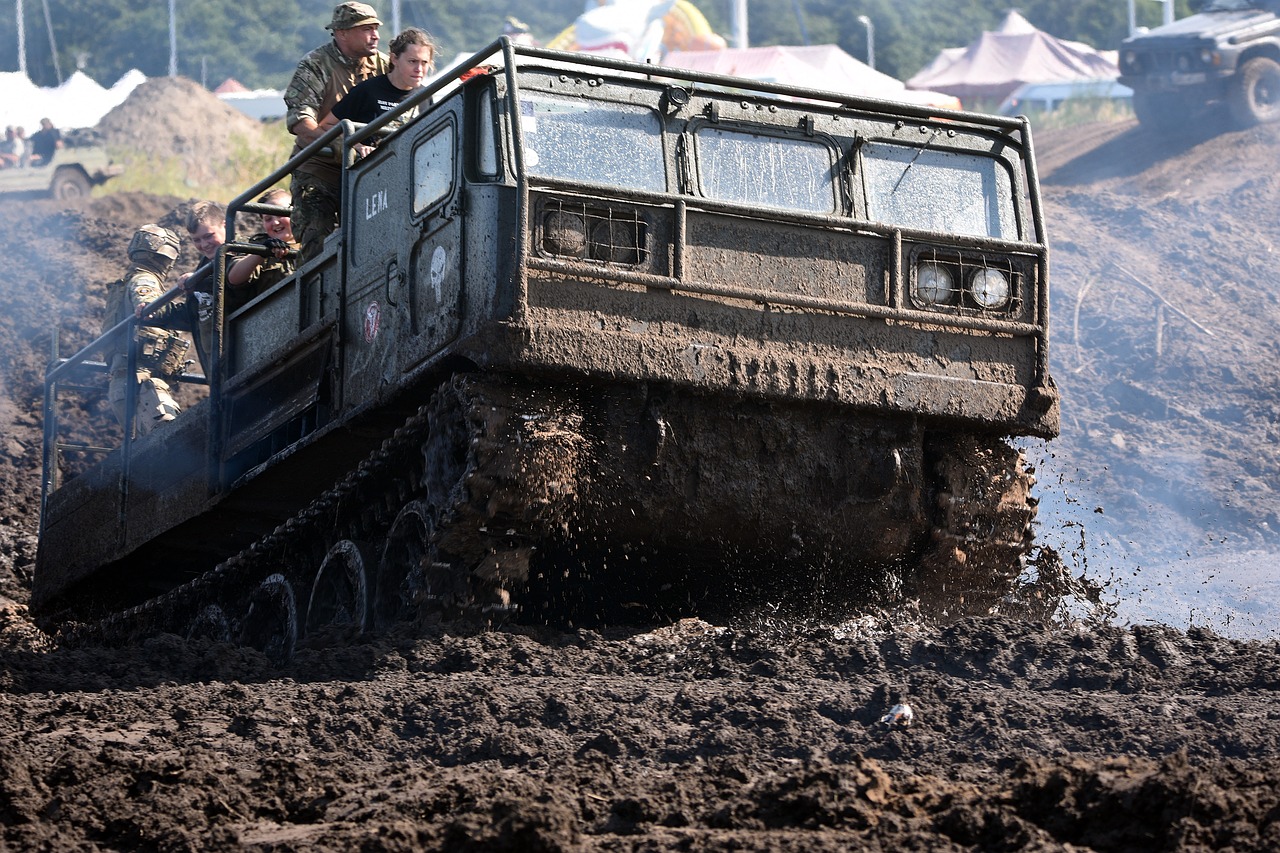
Enhanced Team Collaboration
In the fast-paced world of military operations, effective teamwork can mean the difference between success and failure. Virtual Reality (VR) technology has emerged as a powerful tool to enhance team collaboration, providing soldiers with opportunities to engage in realistic training exercises that mimic the complexities of real-life scenarios. Imagine being able to work alongside your comrades in a virtual battlefield, where every decision you make is critical, and every action has consequences. This immersive experience not only fosters camaraderie but also sharpens communication skills and strategic thinking among team members.
One of the standout features of VR technology is its ability to create collaborative training environments. Soldiers can interact with their peers in real-time, coordinating their movements and strategies as if they were on an actual mission. This level of engagement helps build trust and understanding among team members, essential components for any successful military operation. For example, during a VR simulation, a squad might need to execute a tactical maneuver, requiring each member to play their part flawlessly. The immersive nature of VR allows them to practice these scenarios repeatedly, refining their teamwork and enhancing their overall performance.
Moreover, VR can facilitate cross-training among different units. By participating in joint simulations, soldiers from various backgrounds can learn each other's roles and responsibilities, leading to a more cohesive and adaptable fighting force. This kind of training is akin to a sports team practicing together; when each player understands the others' strengths and weaknesses, they can work together more effectively. The result? A unit that operates seamlessly, even in the most chaotic environments.
Another significant advantage of VR in promoting team collaboration is the ability to conduct after-action reviews. After completing a training exercise, teams can analyze their performance in a virtual debriefing session. This allows them to identify strengths and weaknesses, discuss strategies that worked or didn’t, and develop plans for improvement. This reflective practice is crucial for continuous learning and adaptation, ensuring that soldiers are always prepared for the unexpected.
In conclusion, the integration of VR technology in military training not only enhances individual skills but also significantly improves team collaboration. By creating realistic, immersive environments where soldiers can practice together, VR fosters communication, trust, and strategic thinking. The benefits are clear: a more cohesive, agile, and effective military force ready to tackle any challenge that comes their way.
- What is VR technology?
VR technology creates simulated environments that allow users to experience and interact with a digital world, providing immersive training experiences.
- How does VR enhance military training?
It allows soldiers to practice real-world scenarios in a safe environment, improving their skills, decision-making, and team collaboration.
- Are there any drawbacks to using VR in military training?
While VR offers numerous benefits, challenges such as high costs and technological limitations can hinder its implementation.
- Can VR technology improve communication among soldiers?
Yes, VR training exercises encourage collaboration and communication, helping soldiers develop essential teamwork skills.
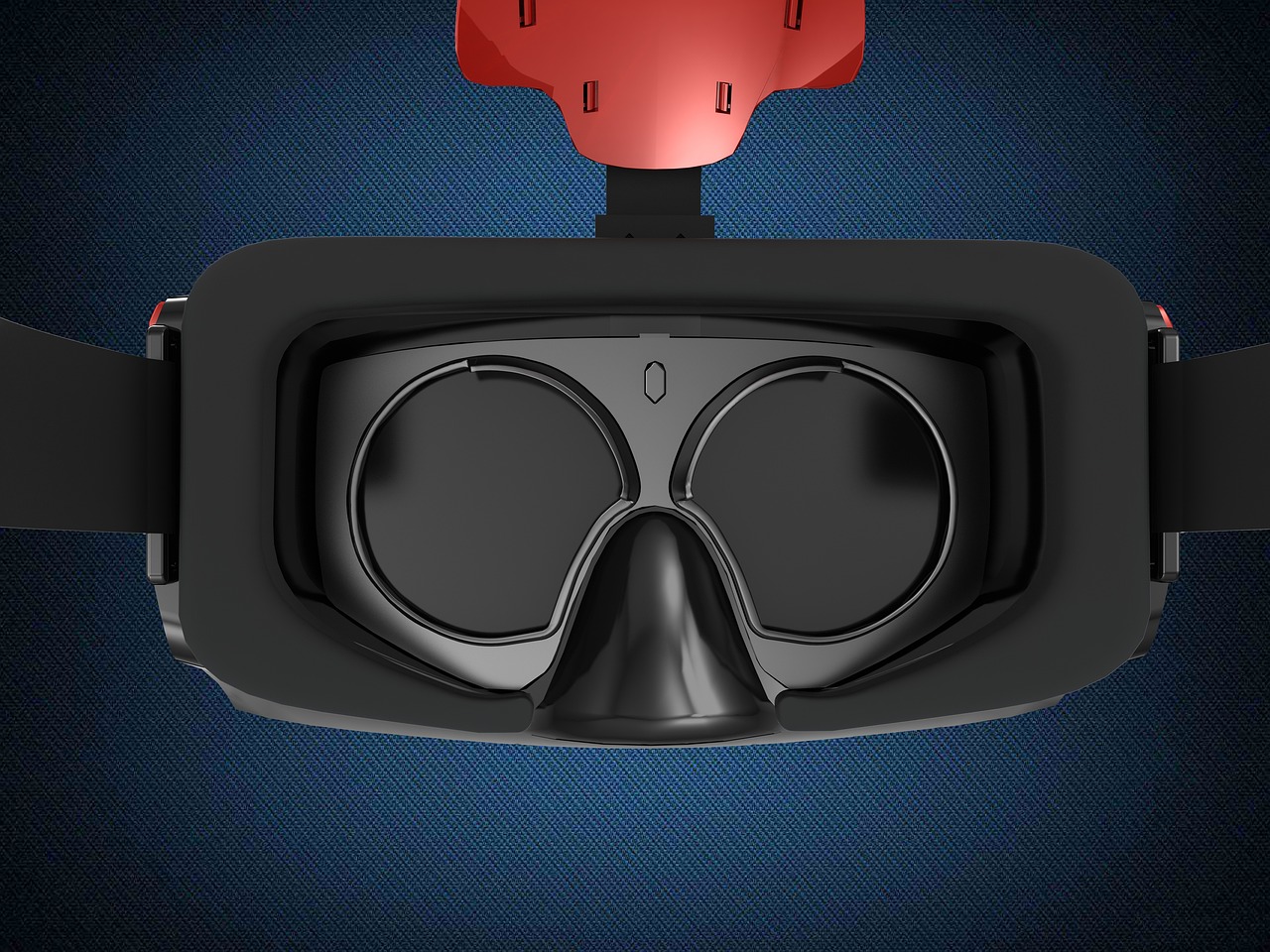
Challenges of Implementing VR Technology
While the integration of Virtual Reality (VR) technology into military training presents numerous advantages, it also comes with a set of challenges that cannot be overlooked. One of the most significant hurdles is the cost implications. The initial investment in VR systems—including hardware, software, and ongoing maintenance—can be substantial. For instance, a comprehensive VR training setup might require specialized headsets, high-performance computers, and simulation software, which collectively can run into hundreds of thousands of dollars. However, when you compare these costs to the potential savings from reduced live training exercises and improved soldier readiness, the long-term benefits often make this investment worthwhile.
Another challenge lies in the technological limitations of current VR systems. While VR has come a long way, there are still gaps in realism and interactivity that can hinder the training experience. For example, many VR environments may not fully replicate the sensory experiences of real-world scenarios, such as the weight of equipment or the sounds of combat. This lack of immersion can affect how effectively soldiers learn and prepare for actual missions. Developers and military training coordinators must work together to address these shortcomings and ensure that VR simulations are as realistic and engaging as possible.
Moreover, the successful implementation of VR technology requires comprehensive training for instructors. It's not enough to simply introduce new technology; instructors must be well-versed in how to utilize these tools effectively. Without proper training, they may struggle to guide trainees through the VR simulations, missing out on key learning opportunities. This necessitates a commitment to ongoing education for trainers, which can add another layer of complexity to the integration process.
In summary, while VR technology offers exciting possibilities for enhancing military training, it is essential to navigate the challenges associated with its implementation. By addressing cost implications, technological limitations, and the need for instructor training, military organizations can harness the full potential of VR to create a more effective and adaptive learning environment for their service members.
- What are the main benefits of using VR in military training?
VR enhances immersion, provides realistic training scenarios, and allows for personalized learning experiences that can adapt to individual soldier needs.
- Are there any risks associated with VR training?
While VR training is generally safe, there is a risk of motion sickness or disorientation for some users, particularly during extended sessions.
- How can military organizations overcome the high costs of VR technology?
By evaluating the long-term benefits and potential cost savings from improved training outcomes, organizations can justify the initial investment in VR technology.
- What types of scenarios can be simulated using VR?
VR can simulate a wide range of scenarios, from combat situations to logistics planning, enabling soldiers to practice various skills in a controlled environment.

Cost Implications
This article explores the integration of Virtual Reality (VR) technology in military training, focusing on its role in adaptive learning, enhancing skills, and improving decision-making in high-pressure environments.
Virtual Reality technology has revolutionized military training by providing immersive environments that replicate real-world scenarios, enabling soldiers to practice critical skills and make decisions without the risks associated with live training exercises.
Adaptive learning tailors educational experiences to individual needs, enhancing retention and engagement. In military contexts, this personalized approach ensures that each soldier receives the training necessary to excel in their specific roles and responsibilities.
By leveraging VR, military training programs can create customized simulations that adapt to the learner's pace and skill level, fostering a more effective and engaging learning environment for service members.
VR platforms can provide immediate feedback during training exercises, allowing soldiers to understand their mistakes and successes instantly, which is crucial for skill development and confidence building.
Scenario-based learning in VR allows trainees to immerse themselves in lifelike situations, enhancing their problem-solving skills and preparing them for the unpredictability of real combat situations.
VR technology facilitates collaborative training exercises, enabling soldiers to work together in virtual environments, improving communication skills and teamwork, which are vital in military operations.
Despite its advantages, integrating VR technology into military training faces challenges, including high costs, technological limitations, and the need for comprehensive training for instructors to effectively utilize these tools.
The initial investment in VR technology can be significant, encompassing various elements such as hardware, software, and ongoing maintenance. For many military organizations, this upfront cost can be daunting. However, it’s essential to view these expenses as an investment in future readiness rather than mere spending. The long-term benefits often justify these expenditures through improved training outcomes.
To break it down further, let’s consider the key components of the costs involved:
| Cost Component | Description | Estimated Cost |
|---|---|---|
| Hardware | VR headsets, motion sensors, and computing devices | $5,000 - $50,000 per unit |
| Software | Custom simulations and training programs | $10,000 - $100,000 |
| Maintenance | Regular updates and repairs | $1,000 - $5,000 annually |
While these figures can seem overwhelming, it’s crucial to remember that the effectiveness of VR training can lead to a significant reduction in training time and resources. For example, soldiers can engage in realistic training scenarios without the need for extensive physical setups or live ammunition, which can be both costly and hazardous.
Ultimately, the cost implications of VR technology in military training are a double-edged sword. The initial financial burden is countered by the potential for enhanced operational readiness and effectiveness, making it a worthwhile consideration for military organizations aiming to stay ahead in modern warfare.
- What are the primary advantages of using VR in military training?
VR offers immersive training environments, personalized learning experiences, and real-time feedback, all of which enhance skill acquisition and decision-making. - How does adaptive learning impact military training?
Adaptive learning ensures that training is tailored to each soldier's needs, improving engagement and retention of critical skills. - What are the challenges of implementing VR technology?
Challenges include high costs, technological limitations, and the need for trained instructors to effectively use VR tools.

Technological Limitations
While the integration of Virtual Reality (VR) technology in military training has shown immense potential, it is not without its . One of the primary challenges is the realism of the simulations. Although VR can create immersive environments, the fidelity of these environments often falls short of real-life scenarios. For instance, the textures, sounds, and interactions may not perfectly mimic what soldiers would experience in actual combat situations. This discrepancy can lead to a gap in training effectiveness, as soldiers may struggle to transfer skills learned in VR to real-world applications.
Additionally, there are interactivity issues that can hinder the training experience. Current VR systems may not allow for the level of interaction that is necessary for effective learning. For example, while a soldier can practice aiming and shooting in a virtual environment, the absence of realistic feedback from the weapon or the environment can limit the learning experience. This lack of interactivity can diminish the sense of presence, making it harder for trainees to engage fully with the training material.
Another significant limitation is the cost associated with maintaining and upgrading VR technology. The initial investment can be steep, and ongoing costs for software updates, hardware maintenance, and technical support can add up quickly. In many cases, military budgets are tight, and allocating funds for VR technology can be challenging. This financial burden may lead to a reliance on outdated systems or a lack of access to the latest advancements in VR technology, which can further hinder training effectiveness.
Moreover, there is a learning curve associated with implementing VR technology in military training. Instructors need to be adequately trained to utilize these systems effectively. If instructors are not comfortable with the technology, they may struggle to deliver effective training, which could ultimately affect the soldiers’ learning outcomes. As a result, investing in comprehensive training programs for instructors is essential to ensure that the benefits of VR technology are fully realized.
To summarize, while VR technology holds great promise for military training, several technological limitations must be addressed to maximize its effectiveness. The challenges of realism, interactivity, cost, and instructor training are significant hurdles that need to be overcome. As technology continues to advance, it is crucial for military organizations to stay updated and invest in solutions that enhance the training experience.
- What are the main benefits of using VR technology in military training?
VR technology provides immersive training environments that enhance skill development, decision-making, and teamwork without the risks associated with live exercises. - How does adaptive learning work in military training?
Adaptive learning tailors training experiences to the individual needs of soldiers, ensuring that each person receives the specific training necessary for their role. - What are some challenges faced when implementing VR in military training?
Challenges include the high costs of technology, limitations in realism and interactivity, and the need for comprehensive instructor training. - Can VR technology replace traditional military training methods?
While VR can enhance training, it is not intended to replace traditional methods entirely. Instead, it serves as a complementary tool that can improve overall training effectiveness.
Frequently Asked Questions
- What is VR technology?
Virtual Reality (VR) technology creates immersive digital environments that simulate real-world scenarios. This allows users, like military personnel, to practice skills and make decisions in a safe yet realistic setting.
- How does VR support adaptive learning in military training?
VR supports adaptive learning by tailoring training experiences to individual soldiers' needs. This personalization helps enhance retention and engagement, ensuring that each service member receives the specific training they require for their role.
- What are the benefits of personalized training experiences in VR?
Personalized training experiences in VR allow soldiers to learn at their own pace and skill level. This fosters a more effective and engaging learning environment, enabling them to develop critical skills more efficiently.
- How does real-time feedback work in VR training?
Real-time feedback in VR training provides immediate insights into a soldier's performance during exercises. This instant feedback helps them understand their mistakes and successes, which is crucial for skill development and building confidence.
- What is scenario-based learning in the context of VR?
Scenario-based learning in VR immerses trainees in lifelike situations that enhance their problem-solving skills. It prepares them for the unpredictability of real combat situations, making them more adaptable and effective in the field.
- How does VR enhance team collaboration during training?
VR facilitates collaborative training exercises by allowing soldiers to work together in virtual environments. This improves communication skills and teamwork, which are essential for successful military operations.
- What challenges does the military face when implementing VR technology?
Despite its benefits, the military faces challenges in implementing VR technology, such as high costs, technological limitations, and the need for comprehensive training for instructors to effectively utilize these tools.
- Are the costs of VR technology justified in military training?
While the initial investment in VR technology can be significant, the long-term benefits often justify these costs. Improved training outcomes can lead to better-prepared soldiers, which is invaluable in military contexts.
- What are the current technological limitations of VR in military training?
Current VR technology may have limitations related to realism and interactivity. Addressing these shortcomings is essential to maximize the effectiveness of VR in military training scenarios.



















